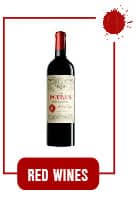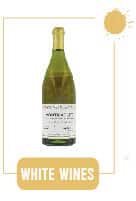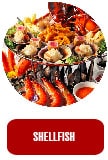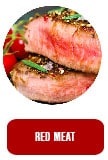No products
Catalog
- 1907
- 1918
- 1924
- 1925
- 1929
- 1931
- 1933
- 1934
- 1937
- 1938
- 1939
- 1940
- 1941
- 1942
- 1943
- 1944
- 1945
- 1946
- 1947
- 1948
- 1949
- 1950
- 1951
- 1952
- 1953
- 1954
- 1955
- 1956
- 1957
- 1958
- 1959
- 1960
- 1961
- 1962
- 1963
- 1964
- 1965
- 1966
- 1967
- 1968
- 1969
- 1970
- 1971
- 1972
- 1973
- 1974
- 1975
- 1976
- 1977
- 1978
- 1979
- 1980
- 1981
- 1982
- 1983
- 1984
- 1985
- 1986
- 1987
- 1988
- 1989
- 1990
- 1991
- 1992
- 1993
- 1994
- 1995
- 1996
- 1997
- 1998
- 1999
- 2000
- 2001
- 2002
- 2003
- 2004
- 2005
- 2006
- 2007
- 2008
- 2009
- 2010
- 2011
- 2012
- 2013
- 2014
- 2015
- 2016
- 2017
- 2018
- 2019
- 2020
Other countries
wines from other countries
Subcategories
-
Portugal
Portugal is justifiably famous for its great dessert wine, Port.
-
Scotland
-
Japan
-
Australia
Australia is one of the world powers of wine. The wine industry of Australia is perhaps the most technologically advanced, forward-thinking on earth, and the success of Australian wines around the world is the envy of wine producers in many other countries.
Australia has about 2,000 wineries. Many of these wineries are small, family-owned companies, but four mega-companies — Foster’s Wine Group, Constellation Wines, Pernod Ricard, and McGuigan Simeon Wines — together with one family-owned winery, Casella Wines, are responsible for about two-thirds of Australia’s wine production.
-
Hungary
The one Hungarian wine region that does have international fame is Tokaj-Hegyalja, which takes its name from the town of Tokaj and owes its reputation to its world-class dessert wine, Tokaji Azsu. The word Aszu refers to botrytised grapes. The wine comes from Furmint and Harslevelu grapes, both native white varieties, and sometimes Muscat grapes. This region also makes dry table wines, such as the varietal Tokaji Furmint.
Tokaji Azsu wines are labeled as three, four, five, or six Puttonyos, according to their sweetness, with six Puttonyos wines being the sweetest. (Puttonyos are baskets used to harvest the botrytised grapes, as well as a measure of sweetness.) All Tokaji Azsu wines sell in 500 ml bottles, and they range in price from about $35 to $150 per bottle, depending on their sweetness level.
-
Germany
Germany has 13 wine regions — 11 regions in the west and 2 regions in the eastern part of the country. German wines are mostly white. They’re fruity in style, low in alcohol, rarely oaked, and often off-dry or sweet. Their labels carry grape names, which is an anomaly in Europe.
Germany’s finest vineyards are situated along rivers such as the Rhine and the Mosel, and on steep, sunny slopes, to temper the extremes of the weather and help the grapes ripen.
-
Austria
Austria's wines come from the eastern part of the country, where the Alps recede into hills. Most of the wines come from small wineries. Austria makes less than one percent of all the wine in the world.
-
Switzerland
Switzerland is in a perfectly logical location for growing grapes and making fine wine, nestled between Germany, France, and Italy.
About half of Switzerland’s wines are white; most are made from Chasselas — a grape cultivated with much less distinction in Germany, eastern France, and the Loire Valley. In Switzerland, Chasselas wines tend to be dry, fairly full-bodied, and unoaked, with mineral and earthy flavors.
Other white grapes include Pinot Gris, Sylvaner, Marsanne, Petit Arvine, and Amigne — the latter two indigenous to Switzerland. Merlot is an important red grape (especially in the Italian-speaking Ticino region), along with Pinot Noir and Gamay.
-
USA
-
Chili
-
Argentine
-
new zealand
For several years New Zealand has won international acclaim for its white Chardonnays and Sauvignons, though Riesling, Pinot Noir, Cabernet and Merlot are also able to win. Despite the success of other varieties, it is undeniably Marlborough Sauvignon Blanc that has conquered the world of wine.
-
South Africa wines
How old can you be to be considered new? South African viticulture does not care about being pigeonholed or being considered New World. For 350 years now, winegrowers have been pressing wine from the Cape of Good Hope to the rural interior, peppered with African beauty and European influences. They do not create a special style here, but wine with character. South African character; wild, natural and relaxed at the same time. Powerful reds, fresh whites, fruity sparkling wines and rosé - straight from the Western Cape. Once sailed halfway around the world to bring you closer to the great hope of the wine world.
-

Epesses "Réserve du Domaine" 2019 - le...
domaine Aucrêt Epesses "Réserve du Domaine" 2019
17,55 CHF -

Riesling Hipping GG 2020 - Kuhling-Gillot
Weingut Kühling-Gillot Hipping Grosses Gewächs 2020
64,85 CHF -

-

Epesses la Crosse 2017 - Luc Massy
2017 Luc Massy La Crosse Epesses Grand Cru, Lavaux, Switzerland
17,85 CHF -

Epesses Clos du Boux 2016 - Luc Massy
2016 Luc Massy Clos du Boux Epesses Grand Cru, Lavaux, Switzerland
18,95 CHF 21,10 CHF -10%Reduced price! -

-

cuvée Hill 1 2004 - Leo Hillinger
2004 Leo Hillinger Hill 1, Burgenland, Austria
43,80 CHF 48,65 CHF -10%Reduced price! -

TBA Muskat Ottonel Zwischen den Seen No. 5...
2004 Weinlaubenhof Alois Kracher Kollektion Muskat Ottonel Trockenbeerenauslese, Burgenland, Austria Trockenbeerenauslese, Neusiedlersee, Austria
70,25 CHF -

For Her 2015 - L'Aventure Winery
2015 L'Aventure 'For Her', Paso Robles, USA
126,50 CHF 140,55 CHF -10%Reduced price! -

-

-

For Her 2017 - L'Aventure Winery
2017 L'Aventure 'For Her', Paso Robles, USA
136,20 CHF 151,35 CHF -10%Reduced price!
100 % in stock
All of our products are avalaible on stock
Quick delivery
Your order will be shipped in 48 hours in a packaging provided for this purpose
Free delivery
Free shipment fees for orders over 1000 CHF (in Switzerland)
Free pickup in Geneva
In order to avoid shipping fees, your order can be picked up directly in our cellars or shop in Geneva
Your fidelity rewarded
2 % off





































